Abstract
Young intact plants of maize (Zea mays L. cv INRA 508) were exposed to 2 to 4 kilopascals partial pressure oxygen (hypoxic pretreatment) for 18 hours before excision of the 5 millimeter root apex and treatment with strictly anaerobic conditions (anoxia). Hypoxic acclimation gave rise to larger amounts of ATP, to larger ATP/ADP and adenylate energy charge ratios, and to higher rates of ethanol production when excised root tips were subsequently made anaerobic, compared with root tips transferred directly from aerobic to anaerobic media. Improved energy metabolism following hypoxic pretreatment was associated with increased activity of alcohol dehydrogenase (ADH), and induction of ADH-2 isozymes. Roots of Adh1− mutant plants lacked constitutive ADH and only slowly produced ethanol when made anaerobic. Those that were hypoxically pretreated acclimated to anoxia with induction of ADH2 and a higher energy metabolism, and a rate of ethanol production comparable to that of nonmutants. All these responses were insensitive to the presence or absence of NO3−. Additionally, the rate of ethanol production was about 50 times greater than the rate of reduction of NO3− to NO2−. These results indicate that nitrate reductase does not compete effectively with ADH for NADH, or contribute to energy metabolism during anaerobic respiration in this tissue through nitrate reduction. Unacclimated root tips of wild type and Adhl− mutants appeared not to survive more than 8 to 9 hours in strict anoxia; when hypoxically pretreated they tolerated periods under anoxia in excess of 22 hours.
Full text
PDF
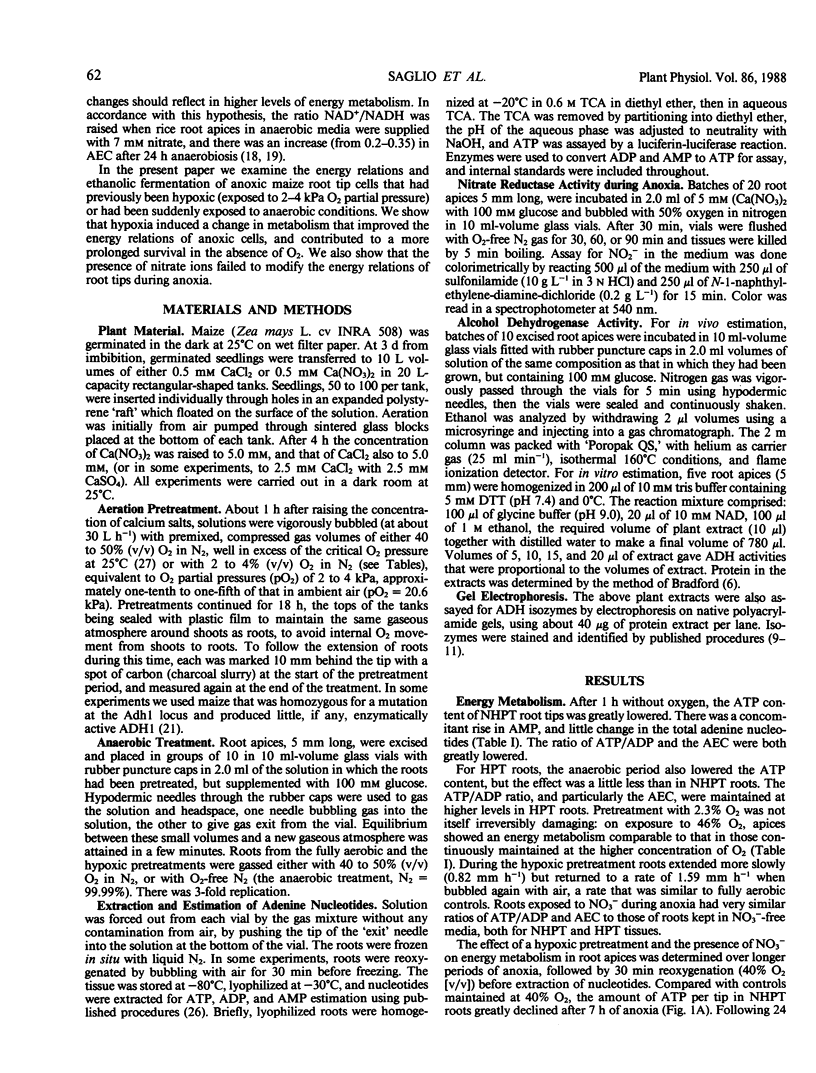
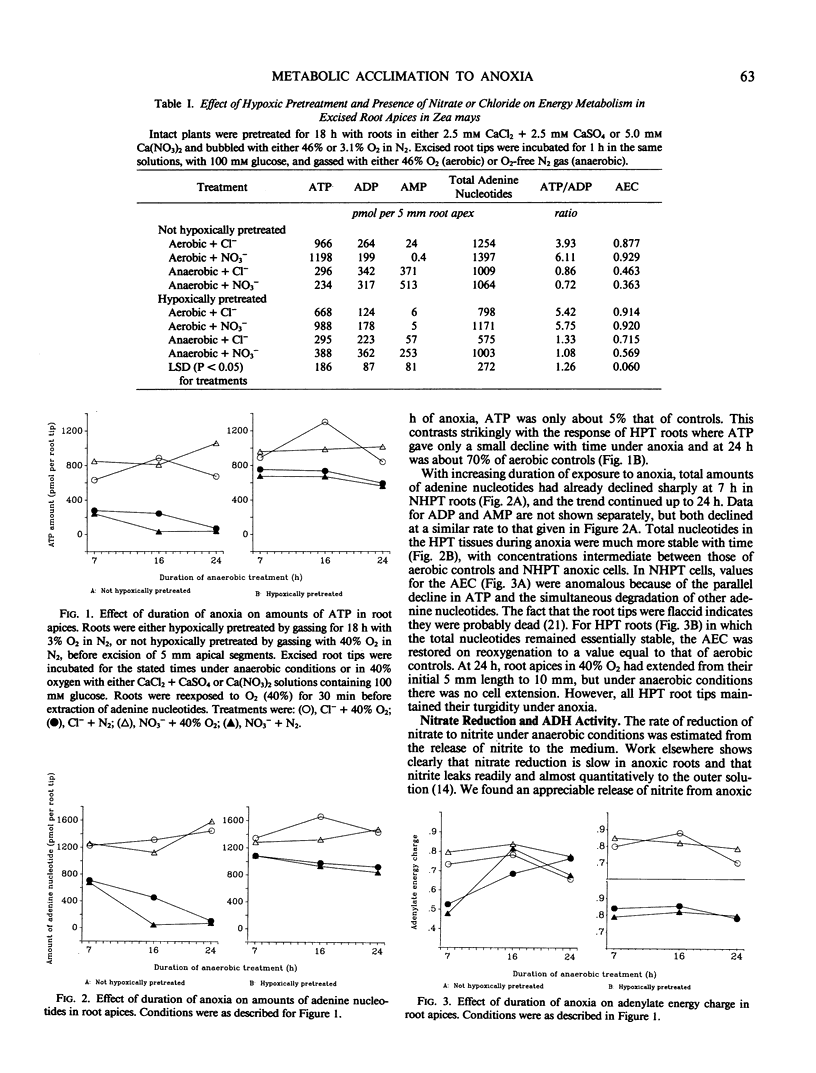
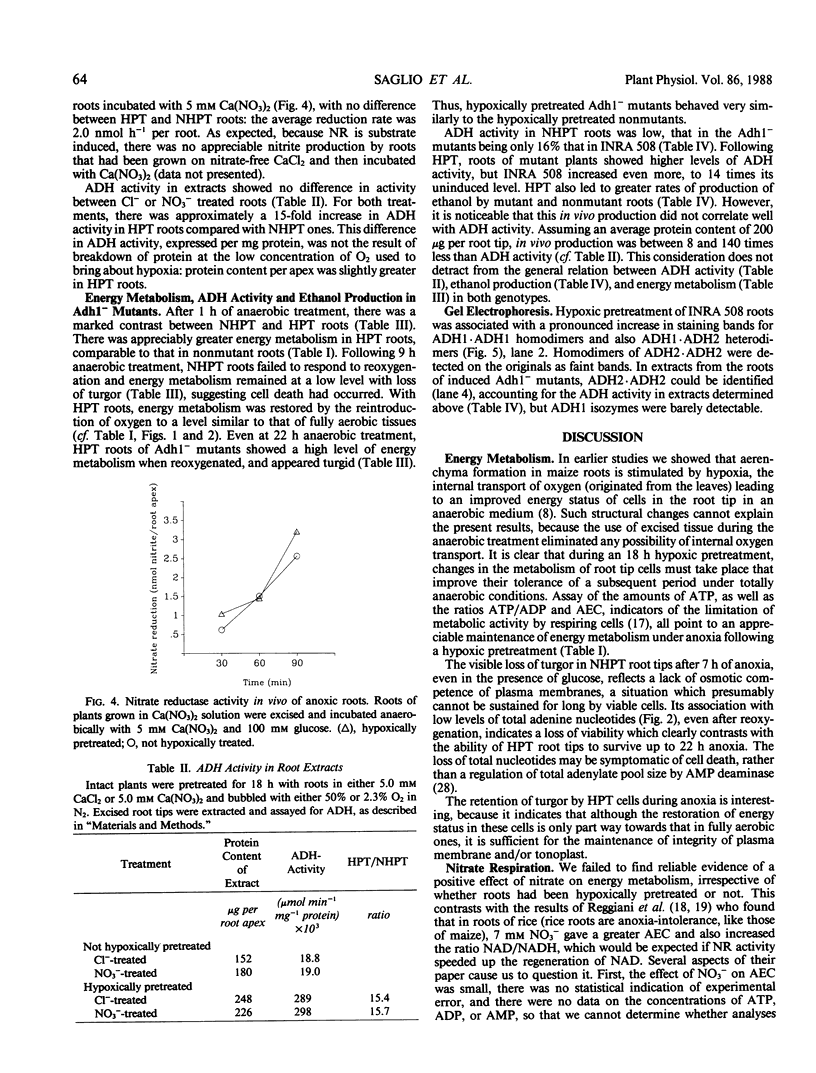
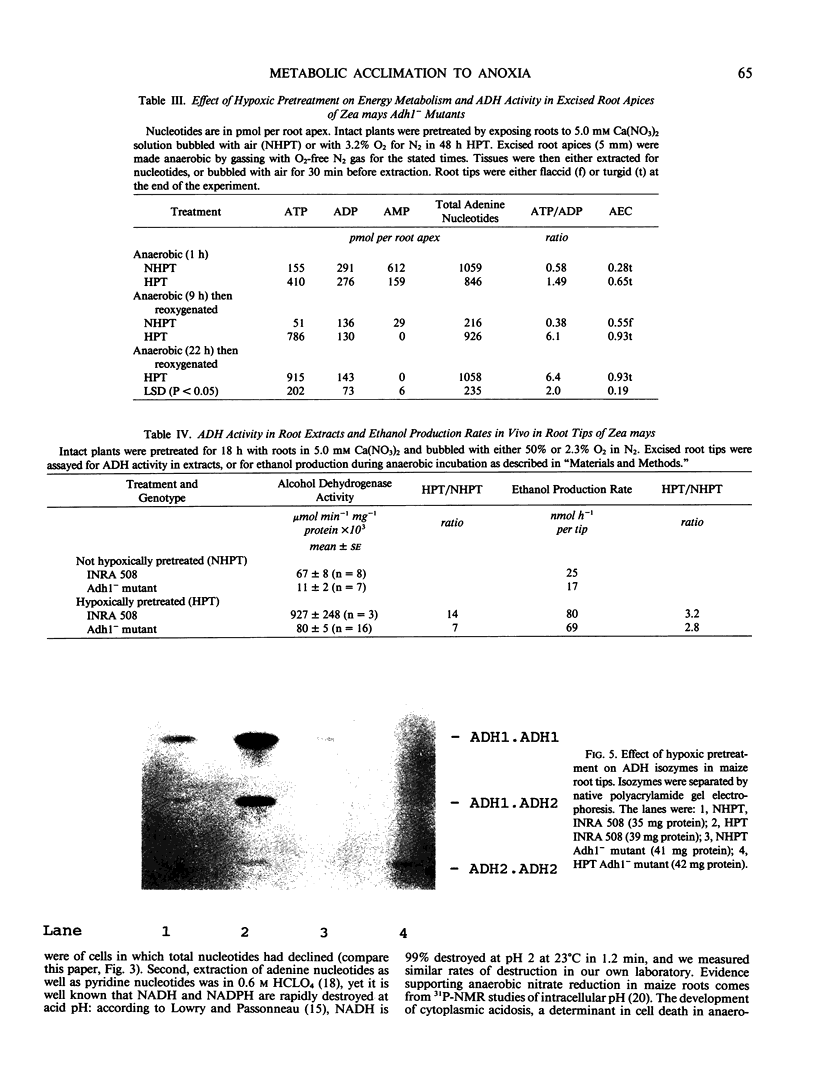
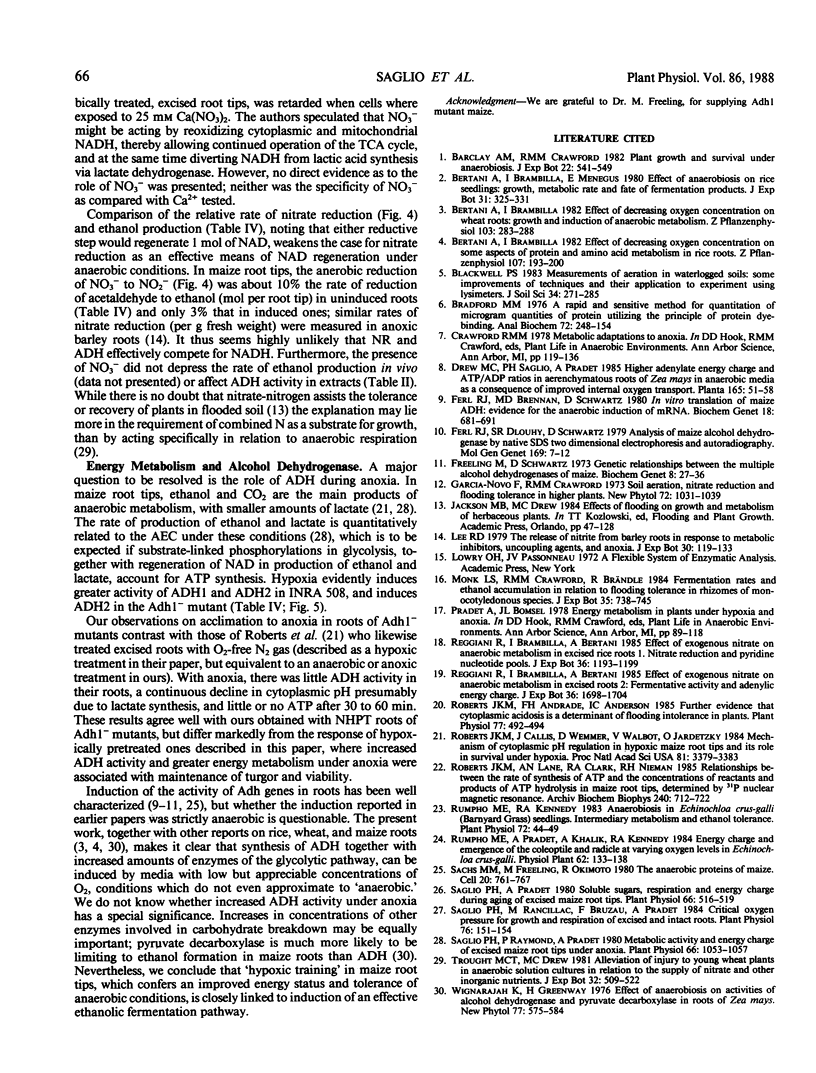
Images in this article
Selected References
These references are in PubMed. This may not be the complete list of references from this article.
- Bradford M. M. A rapid and sensitive method for the quantitation of microgram quantities of protein utilizing the principle of protein-dye binding. Anal Biochem. 1976 May 7;72:248–254. doi: 10.1006/abio.1976.9999. [DOI] [PubMed] [Google Scholar]
- Ferl R. J., Brennan M. D., Schwartz D. In vitro translation of maize ADH: evidence for the anaerobic induction of mRNA. Biochem Genet. 1980 Aug;18(7-8):681–691. doi: 10.1007/BF00484585. [DOI] [PubMed] [Google Scholar]
- Freeling M., Schwartz D. Genetic relationships between the multiple alcohol dehydrogenases of maize. Biochem Genet. 1973 Jan;8(1):27–36. doi: 10.1007/BF00485554. [DOI] [PubMed] [Google Scholar]
- Roberts J. K., Andrade F. H., Anderson I. C. Further Evidence that Cytoplasmic Acidosis Is a Determinant of Flooding Intolerance in Plants. Plant Physiol. 1985 Feb;77(2):492–494. doi: 10.1104/pp.77.2.492. [DOI] [PMC free article] [PubMed] [Google Scholar]
- Roberts J. K., Callis J., Wemmer D., Walbot V., Jardetzky O. Mechanisms of cytoplasmic pH regulation in hypoxic maize root tips and its role in survival under hypoxia. Proc Natl Acad Sci U S A. 1984 Jun;81(11):3379–3383. doi: 10.1073/pnas.81.11.3379. [DOI] [PMC free article] [PubMed] [Google Scholar]
- Roberts J. K., Lane A. N., Clark R. A., Nieman R. H. Relationships between the rate of synthesis of ATP and the concentrations of reactants and products of ATP hydrolysis in maize root tips, determined by 31P nuclear magnetic resonance. Arch Biochem Biophys. 1985 Aug 1;240(2):712–722. doi: 10.1016/0003-9861(85)90080-3. [DOI] [PubMed] [Google Scholar]
- Rumpho M. E., Kennedy R. A. Anaerobiosis in Echinochloa crus-galli (Barnyard Grass) Seedlings : Intermediary Metabolism and Ethanol Tolerance. Plant Physiol. 1983 May;72(1):44–49. doi: 10.1104/pp.72.1.44. [DOI] [PMC free article] [PubMed] [Google Scholar]
- Sachs M. M., Freeling M., Okimoto R. The anaerobic proteins of maize. Cell. 1980 Jul;20(3):761–767. doi: 10.1016/0092-8674(80)90322-0. [DOI] [PubMed] [Google Scholar]
- Saglio P. H., Pradet A. Soluble Sugars, Respiration, and Energy Charge during Aging of Excised Maize Root Tips. Plant Physiol. 1980 Sep;66(3):516–519. doi: 10.1104/pp.66.3.516. [DOI] [PMC free article] [PubMed] [Google Scholar]
- Saglio P. H., Rancillac M., Bruzan F., Pradet A. Critical oxygen pressure for growth and respiration of excised and intact roots. Plant Physiol. 1984 Sep;76(1):151–154. doi: 10.1104/pp.76.1.151. [DOI] [PMC free article] [PubMed] [Google Scholar]
- Saglio P. H., Raymond P., Pradet A. Metabolic Activity and Energy Charge of Excised Maize Root Tips under Anoxia: CONTROL BY SOLUBLE SUGARS. Plant Physiol. 1980 Dec;66(6):1053–1057. doi: 10.1104/pp.66.6.1053. [DOI] [PMC free article] [PubMed] [Google Scholar]



